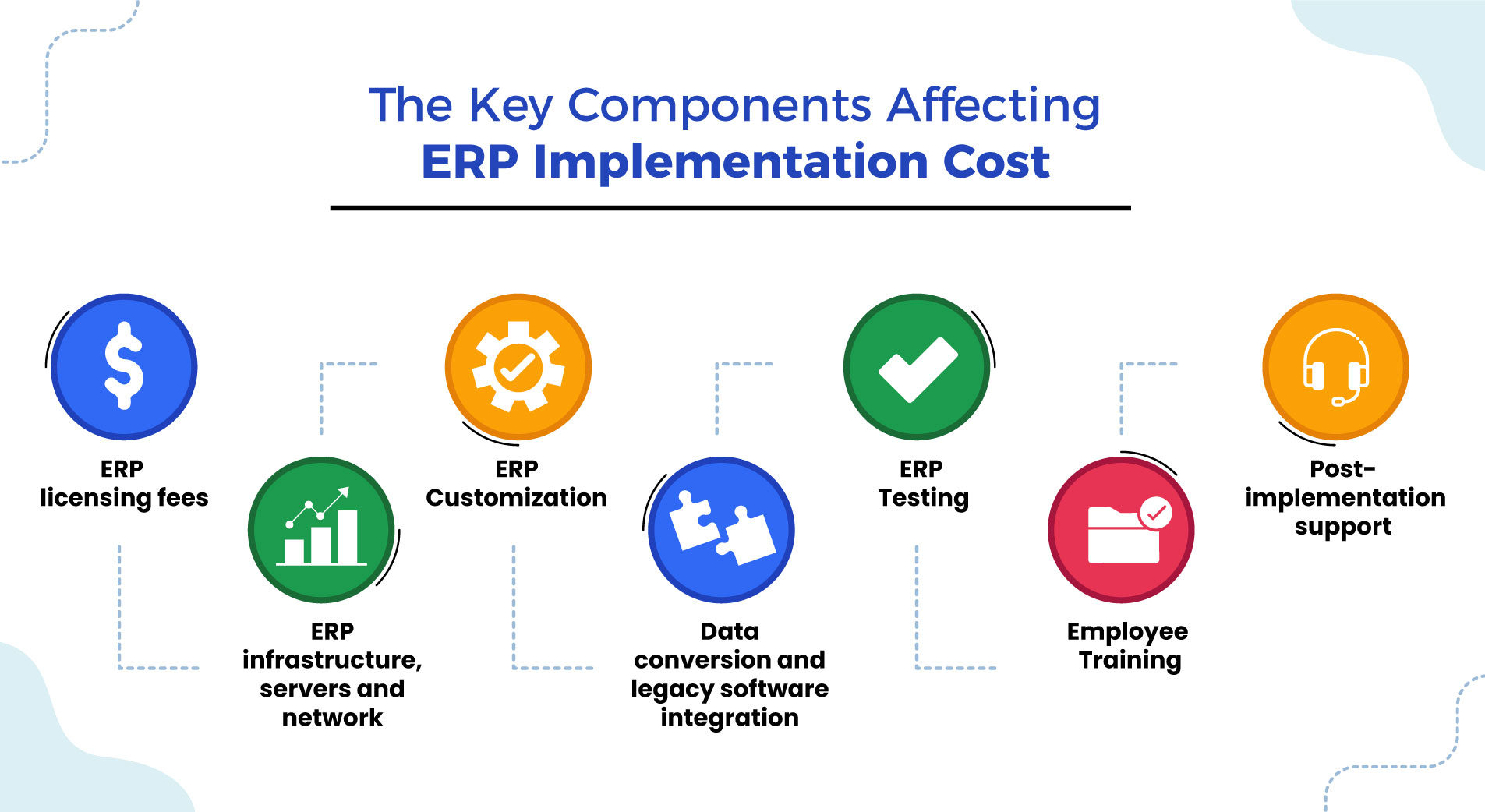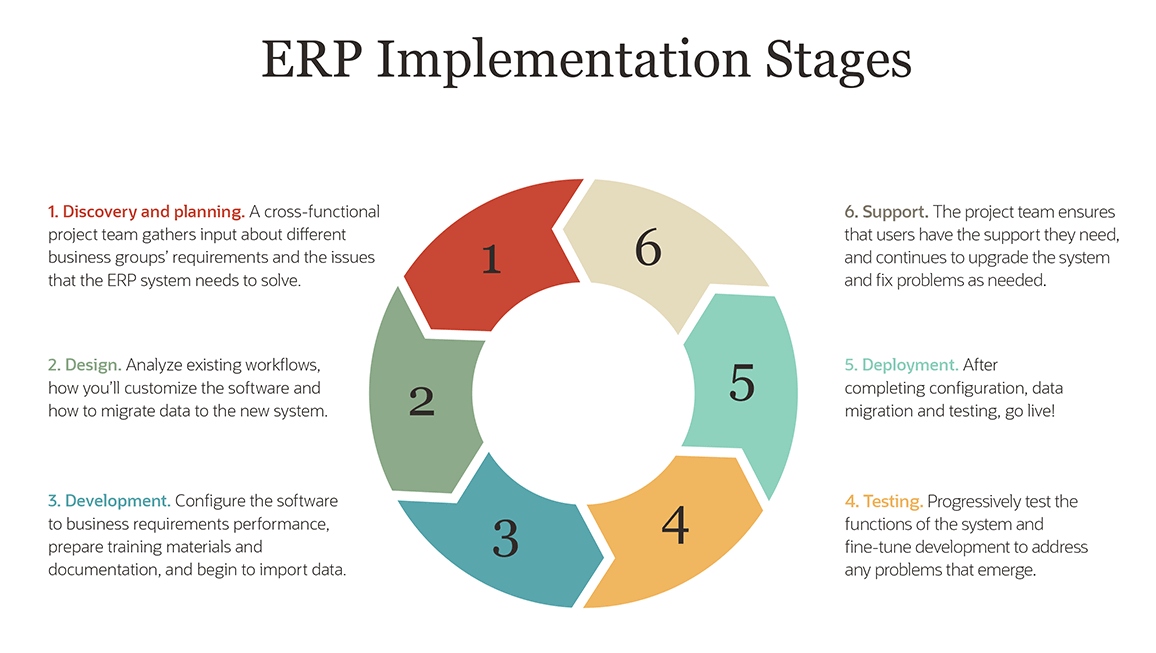ERP Implementation Cost: A Comprehensive Guide for Informed Decision-Making
Introduction
In the dynamic landscape of modern business, enterprises are constantly seeking ways to streamline operations, enhance efficiency, and gain a competitive edge. Enterprise Resource Planning (ERP) systems have emerged as a powerful solution, offering a comprehensive suite of integrated applications that automate and manage core business processes across multiple departments. However, the implementation of an ERP system can be a significant undertaking, involving substantial investments in terms of time, resources, and capital. Understanding the intricacies of ERP implementation cost is crucial for organizations to make informed decisions and maximize the value of their investment.
Understanding the ERP Implementation Cost
ERP implementation cost encompasses a wide range of expenses incurred throughout the project lifecycle. These costs can be categorized into two primary groups:

1. Direct Costs:
- Software Licensing Fees: Licensing fees are paid to the ERP vendor for the use of their software and applications. These fees can vary significantly depending on the size and complexity of the organization, as well as the specific modules and features required.
- Hardware Costs: Hardware upgrades or new purchases may be necessary to support the ERP system’s infrastructure. These costs include servers, storage devices, and network equipment.
- Implementation Services: Professional services from consultants or system integrators are typically required to assist with project planning, configuration, customization, and data migration. The scope and complexity of these services directly impact their cost.
- Training Costs: Training employees on the new ERP system is essential for successful adoption and utilization. These costs include instructor-led training, online courses, and materials.
- Data Migration Costs: Migrating existing data from legacy systems to the new ERP system can be a complex and time-consuming process, incurring significant costs.
2. Indirect Costs:
- Business Disruption Costs: ERP implementation can disrupt normal business operations, leading to lost productivity, delays, and potential revenue loss. These indirect costs can be difficult to quantify but should be carefully considered.
- Opportunity Costs: The time and resources dedicated to ERP implementation can divert attention from other strategic initiatives, resulting in missed opportunities for growth or innovation.
- Maintenance and Support Costs: Ongoing maintenance and support costs are necessary to keep the ERP system up-to-date, secure, and functioning optimally. These costs include software updates, technical support, and hardware maintenance.
Factors Influencing ERP Implementation Cost

The cost of ERP implementation can vary widely depending on several factors:
- Organization Size and Complexity: Larger organizations with complex business processes and multiple locations typically incur higher implementation costs.
- Industry and Business Model: Different industries and business models have unique requirements, which can impact the scope and complexity of the ERP implementation.
- Software Features and Customization: The number and complexity of ERP modules required, as well as the extent of customization, directly influence the implementation cost.
- Implementation Partner: The experience, expertise, and reputation of the implementation partner can significantly affect the cost and success of the project.
- Project Scope: The scope of the ERP implementation, including the number of departments involved and the extent of data migration, plays a crucial role in determining the overall cost.
Advantages and Disadvantages of ERP Implementation Cost
Advantages:

- Improved Efficiency: ERP systems automate and streamline business processes, reducing manual tasks and increasing productivity.
- Enhanced Data Visibility: ERP systems provide a centralized repository for all business data, improving transparency and decision-making.
- Reduced Costs: Over time, ERP systems can lead to significant cost savings through process optimization, inventory management, and supply chain efficiency.
- Improved Customer Service: ERP systems provide a comprehensive view of customer interactions, enabling organizations to respond more effectively to customer needs.
- Increased Agility: ERP systems provide real-time data and insights, allowing organizations to adapt quickly to changing market conditions.
Disadvantages:
- High Initial Investment: ERP implementation can be a costly endeavor, requiring substantial upfront investments in software, hardware, and services.
- Business Disruption: ERP implementation can disrupt normal business operations, potentially leading to lost productivity and revenue.
- Complexity: ERP systems are complex and require significant expertise to configure and manage, which can be a challenge for organizations with limited IT resources.
- Vendor Dependence: Organizations become dependent on the ERP vendor for ongoing support and updates, which can lock them into long-term contracts and limit their flexibility.
- Long Implementation Timeframe: ERP implementation can be a lengthy process, taking months or even years to complete, which can delay the realization of benefits.
Summary of ERP Implementation Cost
ERP implementation cost is a complex and multifaceted aspect of ERP projects. It encompasses a wide range of direct and indirect costs, influenced by various factors such as organization size, industry, software features, implementation partner, and project scope. Understanding the advantages and disadvantages of ERP implementation cost is crucial for organizations to make informed decisions and maximize the value of their investment.
FAQs
Q1: What is the average cost of ERP implementation?
A1: The average cost of ERP implementation varies significantly depending on the factors mentioned above. However, it typically ranges from 5% to 15% of the organization’s annual revenue.
Q2: What is the most significant cost component of ERP implementation?
A2: Implementation services typically account for the largest portion of ERP implementation cost, as they involve professional expertise and customization to meet the organization’s specific requirements.
Q3: How can organizations reduce ERP implementation costs?
A3: Organizations can reduce ERP implementation costs by carefully planning the project, choosing a cost-effective implementation partner, negotiating favorable software licensing agreements, and leveraging cloud-based deployment options.
Q4: What are the long-term benefits of ERP implementation?
A4: Long-term benefits of ERP implementation include improved efficiency, reduced costs, enhanced customer service, increased agility, and improved decision-making capabilities.
Q5: How can organizations measure the ROI of ERP implementation?
A5: Organizations can measure the ROI of ERP implementation by comparing the total cost of the project to the quantified benefits realized over time, such as increased productivity, cost savings, and improved customer satisfaction.
Q6: What are the common challenges faced during ERP implementation?
A6: Common challenges during ERP implementation include business disruption, data migration issues, resistance to change, and a lack of adequate training and support.
Q7: How can organizations mitigate the risks of ERP implementation?
A7: Organizations can mitigate the risks of ERP implementation by conducting thorough planning, selecting a qualified implementation partner, involving stakeholders throughout the process, and establishing a clear project governance structure.
Q8: What are the key success factors for ERP implementation?
A8: Key success factors for ERP implementation include strong leadership, effective change management, thorough planning, a well-defined project scope, and a commitment to training and support.
Q9: How can organizations ensure user adoption of the new ERP system?
A9: Organizations can ensure user adoption of the new ERP system by involving users in the implementation process, providing comprehensive training, addressing concerns and feedback, and offering ongoing support.
Q10: What is the role of technology in ERP implementation?
A10: Technology plays a vital role in ERP implementation, enabling organizations to automate tasks, improve data integration, and enhance collaboration among users.
Q11: How can organizations leverage cloud-based ERP solutions to reduce implementation costs?
A11: Cloud-based ERP solutions offer lower upfront costs, reduced hardware and maintenance expenses, and increased flexibility, enabling organizations to scale their ERP system as needed.
Q12: What are the emerging trends in ERP implementation?
A12: Emerging trends in ERP implementation include the adoption of cloud-based solutions, the use of artificial intelligence (AI) and machine learning (ML), and the integration of ERP systems with other business applications.
Q13: How can organizations prepare for the future of ERP implementation?
A13: Organizations can prepare for the future of ERP implementation by embracing emerging technologies, fostering a culture of continuous improvement, and investing in training and development for their IT teams.
Conclusion
ERP implementation cost is a critical consideration for organizations embarking on the journey of digital transformation. By understanding the various cost components, factors influencing the cost, and the potential advantages and disadvantages, organizations can make informed decisions and develop strategies to optimize their ERP investment. Careful planning, selecting the right implementation partner, and leveraging technology effectively can help organizations minimize costs, mitigate risks, and maximize the value of their ERP system.
